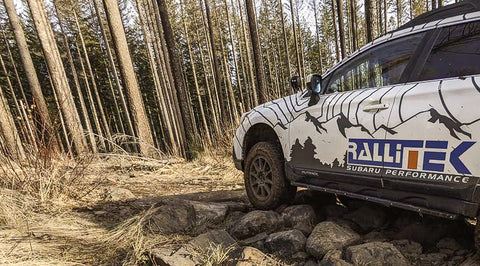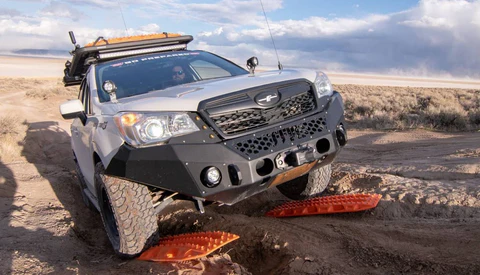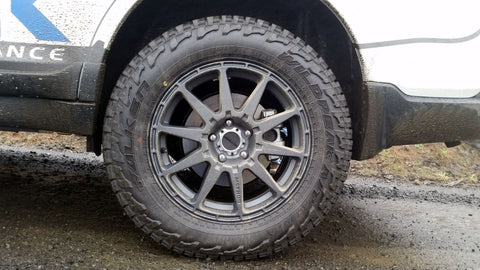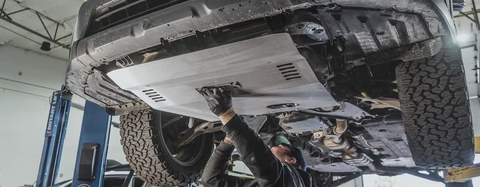Educational

The TORQ Lockers are definitely one of our favorite modifications to enhance your off-road or overland Subaru build. They significantly improve the vehicle's capability while ensuring smooth and comfortable driving on the road.

Off-road enthusiasts often seek to enhance their Subaru's performance to handle rugged terrain. RalliTEK, and other companies offer various suspension solutions to meet these demands. Let's explore RalliTEK Bilstein Strut Assemblies and how they stack up against competitors in terms of improving off-road capabilities.

Off-roading in your Subaru promises adventure, but nature's challenges can lead to unexpected predicaments. Be prepared with our top five essentials for Subaru off-roading. First, a basic survival kit with first aid supplies, water, food, and more ensures you're ready for any situation. Next, invest in recovery equipment like a winch, recovery boards, and straps to handle unforeseen obstacles. Don't forget a jump box to tackle battery issues in remote locations. A basic tool kit with essential tools and a tire patch kit is crucial for minor repairs. Finally, the ultimate essential is a buddy to provide support, brainstorm solutions, and ensure safety. With these essentials, your Subaru off-roading journey becomes an adventure with confidence and security.

Off-roading enthusiasts know that when it comes to conquering challenging terrains, the key is to go bigger. Steep inclines, rugged obstacles, and unpredictable off-road conditions demand a larger-than-life vehicle. That's where suspension lift kits for Subarus come into play, elevating your off-road adventures to the next level. While you might think a suspension lift is reserved for highly modified rigs, this article aims to highlight why it's a crucial consideration even if your Subaru's suspension seems decent. Discover how a suspension lift kit can transform your Subaru into a capable and well-balanced off-roading machine.
In the world of off-roading, it's not just about appearance – it's about performance, safety, and capability. By delving into the benefits of suspension lifts for Subarus, you'll learn how they provide more than just extra height. From accommodating larger tires to improving ground clearance and handling, these lift kits offer the winning formula for tackling a variety of terrains. Moreover, we'll explore the importance of a well-balanced vehicle, understanding how it affects cornering, tire wear, and the overall performance of your Subaru. With the right lift kit and proper adjustments, your Subaru can be optimized for a superior off-road experience, where challenges are met with confidence, and your Subaru handles like a dream on or off the beaten path.

When To Use Lift Springs Or Lift Spacers On Uni-Body Subaru’s For Ideal On And Off-road Performance.
As Subaru overlanding and off-road enthusiasts seek increased ground clearance, they face unique challenges with unibody vehicles. Unlike trucks or Jeeps, unibody vehicles lack frames, requiring careful consideration of factors like CV axle angles, suspension geometry, and steering shaft angles. Avoiding the over-extension of shocks and struts is crucial to maintain performance. Our approach involves the use of lift spacers and springs to optimize ground clearance, ensuring peak off-road capability. This approach is key to understanding our engineering process.

When it comes to off-road adventures, having the right recovery gear in your Subaru is an absolute game-changer. Scott from RalliTEK and Eric from Discover NW Expeditions have teamed up to provide invaluable insights into what you should carry for those off-highway excursions.Eric's Subaru is equipped with various RalliTEK upgrades, including a lift kit, skid plates, control arms, and more, making it ready for anything. In his comprehensive recovery gear kit, Eric emphasizes the importance of having a full-size shovel, a set of 4 recovery boards, sturdy gloves, a recovery strap (not a tow strap), and a recovery rope. Additionally, a tree trunk protector strap is a must if you have a winch, as it allows you to anchor your vehicle safely without harming the environment.So, whether you're planning to conquer challenging terrains, deal with unexpected obstacles, or assist fellow off-roaders, being well-prepared with the right recovery gear ensures you can handle any situation with confidence.

In the world of off-road adventures with your Subaru, one simple technique can significantly boost your traction: "airing down" your tires before tackling the trail. Scott from RalliTEK shares valuable insights on this method, explaining how reducing tire pressure makes them softer, enhancing their grip on challenging obstacles and providing a smoother ride.Most Subaru tires typically run between 30 and 40 psi, ideal for on-road handling and fuel efficiency. However, these higher pressures make the tires rigid, hindering their ability to conform to rough terrain and leading to spinning and sliding. Airing down before hitting the trails is a common practice, with the ideal pressure varying depending on your car's weight, tire and wheel size, and the type of terrain you'll encounter.For RalliTEK Subarus, Scott usually settles around 18 psi for general trail days, considering the vehicle's weight and tire specifications. The process involves using tools like the ARB E-Z Deflator to quickly and accurately reduce the tire pressure. However, after a day of off-road excitement, don't forget to air your tires back up to street pressure using various methods like cordless air compressors, 12-volt options, or even a trusty bike pump. By mastering this simple yet effective technique, you can elevate your Subaru's off-road performance and enjoy a smoother and more enjoyable adventure.
After equipping your Subaru with a RalliTEK lift and robust All-Terrain tires, you embarked on your first off-road adventure, only to discover your limits as your vehicle got stuck. This experience led you to explore a solution: winches. However, the world of winches can be overwhelming with various questions: which manufacturer to choose, what size winch is needed, and how to mount it on your Subaru?
When it comes to selecting a winch, price point is often the initial factor, but investing in a premium brand like WARN or Come-Up is a solid choice. Consider factors like winch capacity, warranty terms, and customer service reviews to narrow down your options. While high-quality components and extensive testing may raise the price, remember that the quality of the winch corresponds to what you pay for.
The next challenge is selecting the right style of winch for your Subaru. To determine the winch capacity you need, use a simple calculation: VEHICLE WEIGHT X 1.5 = WINCH CAPACITY. For example, a RalliTEK Outback weighing around 4,000 pounds should aim for a winch with at least 6,000 pounds of capacity. While this rule can be slightly bent, it's crucial not to choose a winch with insufficient capacity. RalliTEK's Outback, for instance, is equipped with a WARN ProVantage 4500-SSD winch, slightly under the calculated capacity. Still, its size and synthetic rope make it a practical choice for typical scenarios. In rare instances requiring higher capacity, a snatch block can be used to double the winch's pulling capacity, essentially creating a 9,000-pound winch. Subaru's drivetrain also limits wheel spin, reducing the need for the full calculated winch capacity. This informative guide simplifies the daunting process of selecting and mounting a winch for your off-road Subaru adventures. If you have further questions, don't hesitate to reach out to RalliTEK for assistance.

We have been getting a lot of questions about what tire size one can run on their lifted Subaru lately so I compiled a list of verified tire sizes on different cars in the RalliTEK shop. I have 2 different columns, one is the standard size that we will tell anyone that they can run and then the other column is for an aggressive fitment. The aggressive fitment column usually comes with the potential for minor trimming, cutting/flattening of a pinch weld, not being able to run front mud flaps or at the very least, using a heat gun to melt the inner fender out of the way of the tire. Also be sure to notice that some of the tire sizes have an asterisk by them, this is because a 15” wheel is needed for that tire size and may not clear the brakes on your car. This list was created using either the 1.5” or 2” RalliTEK lift kit and Method wheels.

